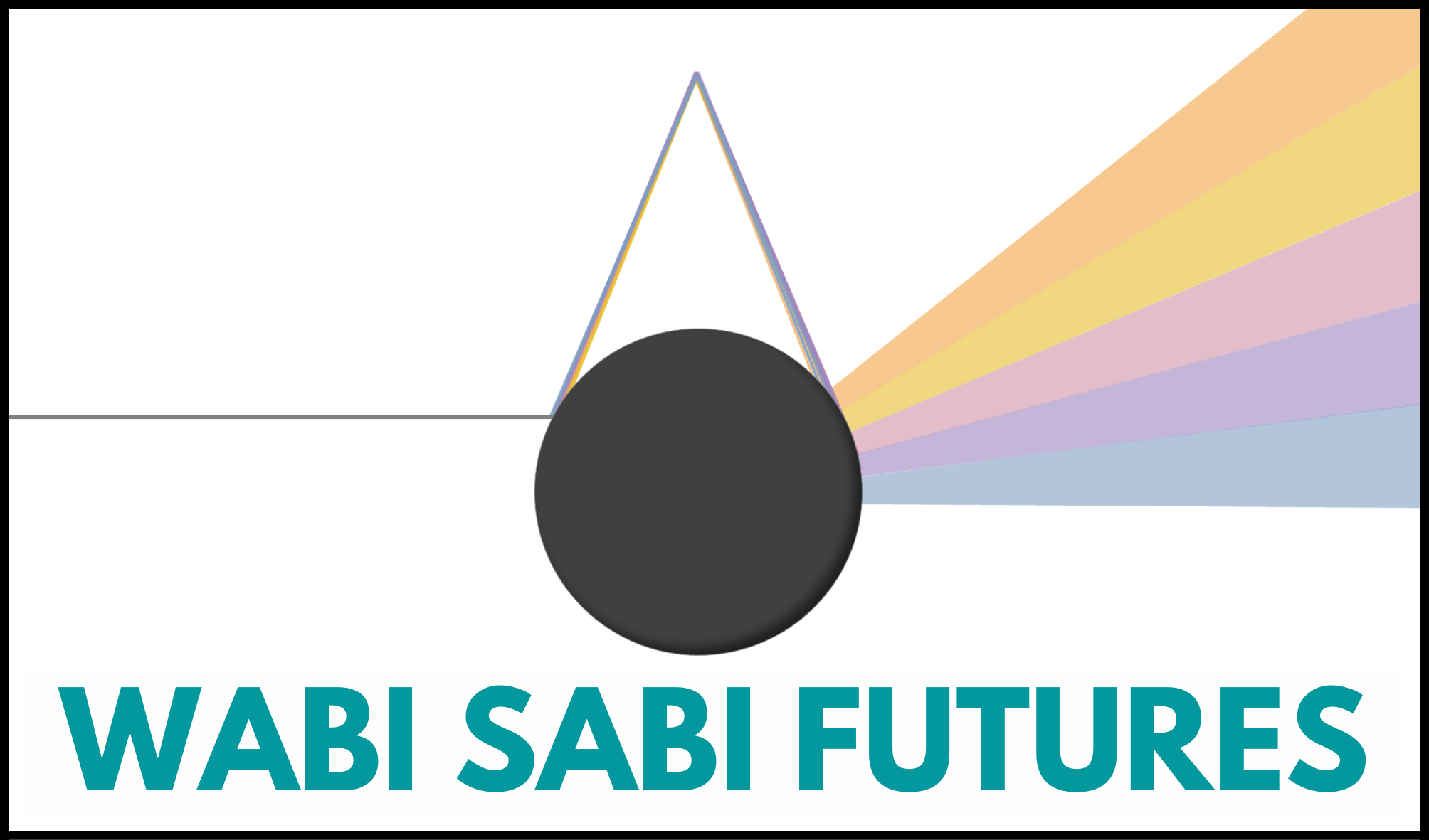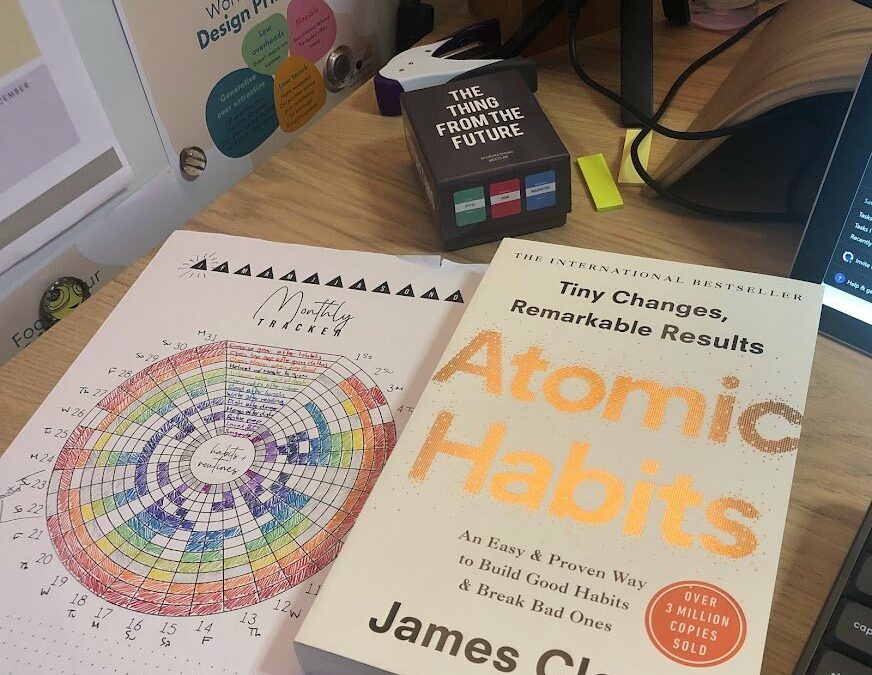MY LIVE-TWEETED NOTES FROM READING ATOMIC HABITS: AN EASY & PROVEN WAY TO BUILD GOOD HABITS & BREAK BAD ONES BY JAMES CLEAR. YOU CAN VISIT THE ORIGINAL TWITTER THREAD HERE.

Habit tracker template from Imperfect Inspiration
Less doomscrolling, more live-tweeting books. New year new you? Starting the year with Atomic Habits by @JamesClear. 🧵
The aggregation of marginal gains is an improvement strategy in which you break down each element of the process you are trying to improve, and look for small ways to improve the performance of each part. These many small changes combined create significant improvement.
Habit change is a long game. Rather than judge your success by on the results you can see today, focus on the trajectory created by your routine behaviours.
Have an ambitious goal for the new year? That goal is an outcome, a lag measure of the habits you’ve adopted. Lag measures don’t give immediate satisfaction or results – instead, they slowly accrue over time. With lag measures, your results reflect what you habitually do.
You set goals to win a game. You build systems to keep playing the game. Habit development is not about a single accomplishment but continuous improvement, committing daily to your process to make long term progress.
“Behaviour that is incongruent with the self will not last.”
It’s hard to adopt a new habit in conflict with your beliefs about yourself. A smoker saying “I’m trying to quit” still sees themselves as a smoker. Changing the framing to “No thanks, I don’t smoke” brings your identity in line with your new behaviours.
Adjusting your identity to reflect new behaviours engages intrinsic motivation to continue these behaviours. Instead of being the type of person who wants this, you are the type of person who is this.
You can’t get too attached to one version of your identity. Progress requires unlearning. Becoming the best version of yourself requires you to continuously edit your beliefs, and to upgrade and expand your identity.
Our lives and identities are shaped by the things we do. When you change what you habitually do, piece by piece you are gathering evidence that reinforces your new identity. Decide on who you want to be, then prove it to yourself with small wins.
In a goal-oriented culture, it can be hard to articulate what type of person you want to be. That’s fine – start with your goals, and find the words you’d use to describe a person who had met that goal. e.g. I want to lose 10kg becomes I’m a person who moves their body every day.
“Behaviours followed by satisfying consequences tend to be repeated and those that produce unpleasant consequences are less likely to be repeated.” – Edward Thorndike
“Habits are, simply, reliable solutions to recurring problems in our environment.” – Jason Hreha
Developing strong habits reduces the number of decisions you need to make in a day, creating more mental space for creative pursuits and getting into flow.
Habits are ingrained. A cue can set them off without our conscious attention. This is what makes good habits powerful and bad habits hard to shake. The more you repeat a pattern, the less attention you place on it, and the less likely you will question what you are doing and why.
“Until you make the unconscious conscious, it will direct your life and you will call it fate.” – Carl Jung
“The more automatic a behaviour becomes, the less likely we are to consciously think about it… We’re so used to doing what we’ve always done that we don’t stop to question whether it’s the right thing to do at all.”
Receiving a reward isn’t the only way to get a dopamine hit – it also happens when you anticipate it. See an opportunity, anticipate a reward, and your dopamine will spike, motivating you to act. A reward you have not yet obtained catalyses action.
Being in motion is strategic – the thinking and planning to work out your approach. Being in motion is not progress – you also need to take action on your plan. Being in motion is attractive because it feels like progress without risking failure.
Framing a habit as something that can be done in 2min or less might feel ineffective. But a 2min habit does not need heroic motivation or determination to complete. A 2min habit has a low threshold to get started, and is more likely to be something you consistently show up for.
“The central idea is to create an environment where doing the right thing is as easy as possible. Much of the battle of building better habits comes down to finding ways to reduce the friction associated with our good habits and increase the friction associated with our bad ones”
Make your habits as easy as possible to start, even on tough days. Think of these as gateway habits – once you have done the 2min habit (put on your joggers), you’ve created suspense. You’ll often feel drawn to complete the next step to resolve the action (go for a run).
Small 2min habits help you master the bigger habit of showing up each day. Doing an easy thing consistently gives you a reliable baseline you can improve upon. Your 2min becomes a ritual to start a bigger routine. This ritual reaffirms intent and create a transition point.
Showing up for your habit each day, no matter how easy, reinforces the identity you are choosing to embody. You are taking small but reliable actions that confirm you as the type of person you have chosen to become.
“The costs of your good habits are in the present. The costs of your bad habits are in the future.”
To build a habit without an immediate payoff (e.g. exercise, diet), attaching a reward directly after will reinforce the habit. The right reward aligns with the identity you’re creating: buying yoga pants after the gym affirms this identity, getting ice cream pushes against it.
As you practice your habit, rewards will give way to intrinsic motivations to continue. “You do it because it’s who you are and it feels good to be you… Incentives can start a habit. Identity sustains a habit.”
Habit tracking creates a tangible signal of your progress which can become it’s own reward. It also keeps you focused on the process, affirming your new identity.
“The first mistake is never the one that ruins you. It is the spiral of repeated mistakes that follows. Missing once is an accident. Missing twice is the start of a new habit.”
Don’t focus on your measurements so much you lose sight of your reasons for measuring. Remember Goodhart’s Law: “When a measure becomes a target, it ceases to be a good measure.”

Consequences impact behaviour the most when they occur nearby in space and time. The Fisher Protocol is one extreme example – implanting nuclear codes next to the heart of a volunteer, so a president must personally kill one person if they wish to kill millions more.
New habits need to be as easy as possible so you can follow through on a bad day. Once established, gradually increase the challenge until you are in the Goldilocks Zone – achievable enough that you feel you’re making progress, and challenging enough to prevent you getting bored.

